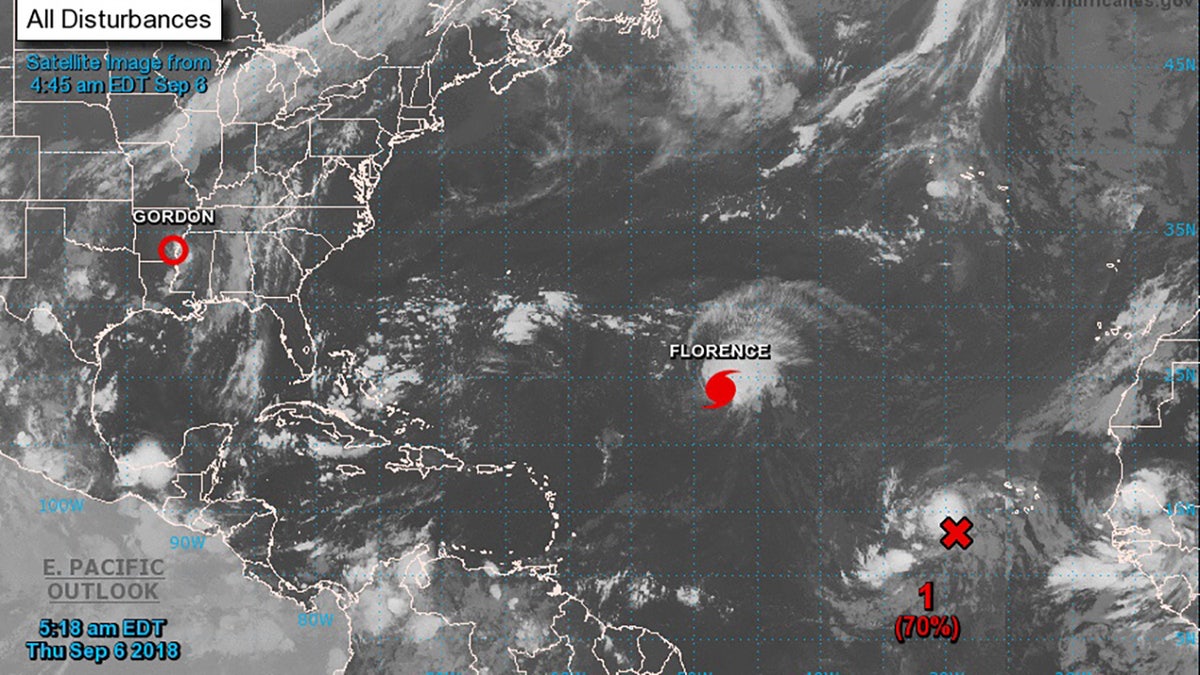
This satellite image shows Hurricane Florence in the North Atlantic Ocean Thursday morning. (National Hurricane Center/NOAA)
Florence was downgraded to a Category 3 storm as it weakened along its path in the Atlantic overnight Thursday, though forecasters say the storm “is expected to remain a strong hurricane for the next several days.”
According to the National Hurricane Center, Florence’s sustained winds dropped to 115 miles per hours—down from its Category 4-level winds of 130 mph on Wednesday. Additional weakening was forecast throughout Thursday.
The agency said Florence was moving northwest at 12 mph and was forecast to turn west-northwest. The storm was 1,170 miles east-southeast of Bermuda overnight Thursday.
While forecasters expect Florence to weaken over the next several days, the storm is predicted to remain a powerful hurricane through early next week.
The National Hurricane Center said that swells generated by Florence will begin to affect Bermuda onFriday and will reach portions of the U.S. East Coast over the weekend. It said that “swells are likely to cause life-threatening surf and rip current conditions.”
There are no watches or warnings currently in effect for the U.S.
While Florence continued on its path in the Atlantic, the remains of Tropical Depression Gordon spread bands of heavy rain across parts of the South as it swirled over Mississippi Wednesday.
Rain spun around the storm's center in the Jackson, Mississippi, area Wednesday afternoon. And bands swept up from the Gulf, dropping more rain on northwest Florida — where 10.48 inches already had fallen at Florida's Pensacola International Airport by Wednesday morning — through the center of Alabama and into Tennessee.
What's left of Gordon is forecast to head northeast into Arkansas. By Saturday, what's left of the storm was forecast to hook to the north, then northeast on a path toward the Great Lakes.
National Weather Service offices in Missouri and Oklahoma said Gordon's remnants could add to the rain caused by a frontal boundary already causing heavy rains in parts of the Midwest. Flash flood watches stretched from the Florida panhandle, through parts of southwest Alabama, Mississippi, Arkansas, Oklahoma, Kansas, Iowa and Illinois.
Fox News’ Sam Chamberlain and the Associated Press contributed to this report.

